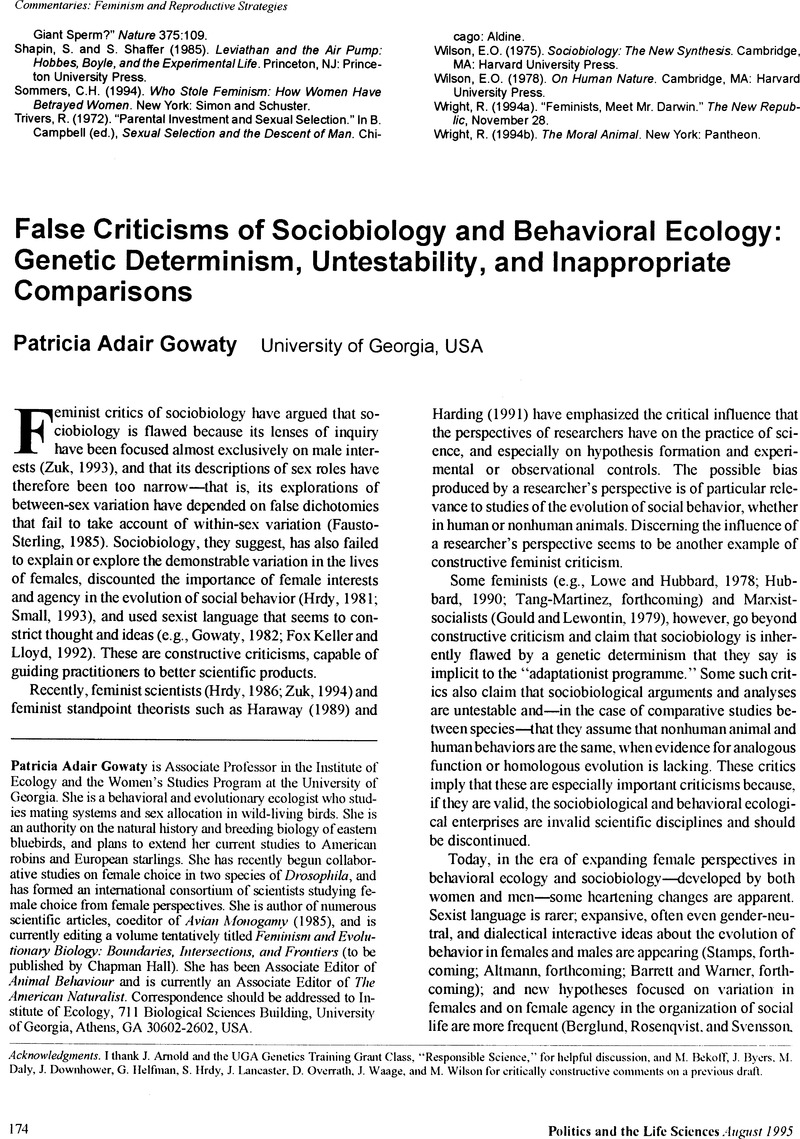Crossref Citations
This article has been cited by the following publications. This list is generated based on data provided by Crossref.
Mysterud, Iver
1996.
Communicating ideas about humans and evolutionary theory.
Trends in Ecology & Evolution,
Vol. 11,
Issue. 7,
p.
310.
Hrdy, Sarah Blaffer
1997.
Raising Darwin’s consciousness.
Human Nature,
Vol. 8,
Issue. 1,
p.
1.
Gowaty, Patricia Adair
1997.
Feminism and Evolutionary Biology.
p.
1.
Brune, Martin
2002.
Toward an Integration of Interpersonal and Biological Processes: Evolutionary Psychiatry as an Empirically Testable Framework for Psychiatric Research.
Psychiatry: Interpersonal & Biological Processes,
Vol. 65,
Issue. 1,
p.
48.
Herr, Patricia Ellis
and
Herr, Jason Young
2003.
Evolutionary Thinking Within Political Science.
Women & Politics,
Vol. 25,
Issue. 4,
p.
31.
Bird, Douglas W.
and
O’Connell, James F.
2006.
Behavioral Ecology and Archaeology.
Journal of Archaeological Research,
Vol. 14,
Issue. 2,
p.
143.



